Today, representatives from the Comprehensive Regional Protection and Solutions Framework (MIRPS for its Spanish acronym) and its Support Platform, including the European Union, the European Asylum Support Agency, the Inter-American Court of Human Rights, together with government delegates from Belgium, Germany, Mexico, Peru and Spain, as well as ICMPD and UNHCR took part in the round-table “Management of large-scale movements of refugees”.
For this round-table, the MIRPS Support Platform in coordination with the Spanish Agency for International Development Cooperation (AECID) have joined efforts with MIEUX+ as part of the European’s Union’s support to this mechanism.
Today’s exchange focused on refugee protection, reception and procedural issues in the context of large-scale movements in the EU and Latin America and the Caribbean (LAC). As always with MIEUX+, the peer-to-peer dimension and dialogue are a fundamental part of the process in building bridges between the EU and other regions of the world.
What is MIRPS?
The governments of Belize, Costa Rica, El Salvador, Guatemala, Honduras, Mexico and Panama decided to follow a joint approach for the management of forced displacement in their region, agreed to strengthen regional cooperation, and share responsibility through MIRPS as a regional contribution to the Global Compact on Refugees.
The MIRPS Support Platform rallies the efforts of the seven MIRPS countries to offer protection, seek solutions and to mobilize support from other conventional and unconventional players in these efforts. The MIRPS Support Platform is also supported by the Organization of American States (OAS) and UNHCR.
Three roundtables with the MIRPS Support Platform
In August 2020, under the current Chairmanship hosted by Spain, the seven MIRPS countries outlined the areas related to protection and strengthening of asylum systems in which they would like to exchange knowledge and practices on.
Based on this identification exercise, three thematic areas emerged:
- Management of large-scale movements of refugees
- Identification of needs of international protection, case management and biometric registration
- The use of differentiated modalities of case processing
Each of these will be covered by a virtual round-table to support peer-to-peer learning and exchange practices in the area of international protection and asylum.
These round-tables are part of efforts to disseminate the many good practices that have been developed within the region and beyond. Among many examples, one supported by MIEUX is the revision of the operational protocol for the Special Migration Situations Team (ESME) in Costa Rica in 2019. The operational tool provides holistic care based on rights at all stages of assistance, from identification to possible repatriation or preparation for a life in Costa Rica.
MIEUX+’s experience in International Protection in LAC
The high and unpredictable migration flows of recent years are stretching the reception and processing capacities of governments in Latin American and the Caribbean concerning international protection and asylum, and placing increasing demands on already limited services and structures at ground level.
As described in the recently published ICMPD LAC Migration Outlook, the COVID-19 crisis in combination with natural disasters, persecution of human rights defenders and widespread violence is driving forced displacement in Central America but also all over LAC.
Confronted with humanitarian crises that have put their systems under strain, many governments have had to reinforce their institutional mechanisms of protection with a focus on the protection of vulnerable categories of migrants. Such is the case for Mexico, challenged with rising numbers of people displaced from El Salvador, Guatemala and Honduras. According to UNHCR, asylum claims registered in March 2021 represent the highest monthly number ever recorded. Of these, Honduran nationals have made 51% of the asylum claims. These numbers continue the trend observed in recent years, where Mexico’s asylum claims jumped by 76% in 2019.
MIEUX’s second Action in the country supported the strengthening of Mexican efforts in the area of identification and protection of migrants in need of international protection. MIEUX provided training for officers of the Mexican Commission for Refugee Assistance and the National Institute of Migration based on the European Asylum Support Office’s training curriculum, including the role of first-contact officials in providing access to the asylum procedure; interviewing vulnerable groups with a particular focus on children; and evidence assessment. Similar to Mexico’s Action, Brazil, Costa Rica and Peru have requested support from MIEUX to work in this domain.
Peer-to-peer learning from EU practices
Aside from EU Member States’ experiences, MIEUX+ has deployed experts to exchange with their Latin American counterparts about EU-level tools and practices, taking the EASO training curriculum and targeted modules as a basis. In particular, all the practical tools developed by EASO, such as first line response, how to conduct interviews, evidence assessment have proven to be very valuable and adaptable to other national contexts. In addition, EASO certified trainers from EU MS were involved in most of the Actions focusing on international protection and asylum in LAC. For more information about these Actions, visit the interactive map.
Next steps
The second virtual round-table in the series will be devoted to the topic of “Identification of needs of international protection, case management and biometric registration” and will take place on 25 May 2021 for members of MIRPS and the MIRPS Support Platform. MIEUX+ will continue to support these efforts to increase regional cooperation in LAC by disseminating practices and building bridges between institutions tasked with protecting asylum seekers and refugees.
Download the graphic recording (in Spanish)!
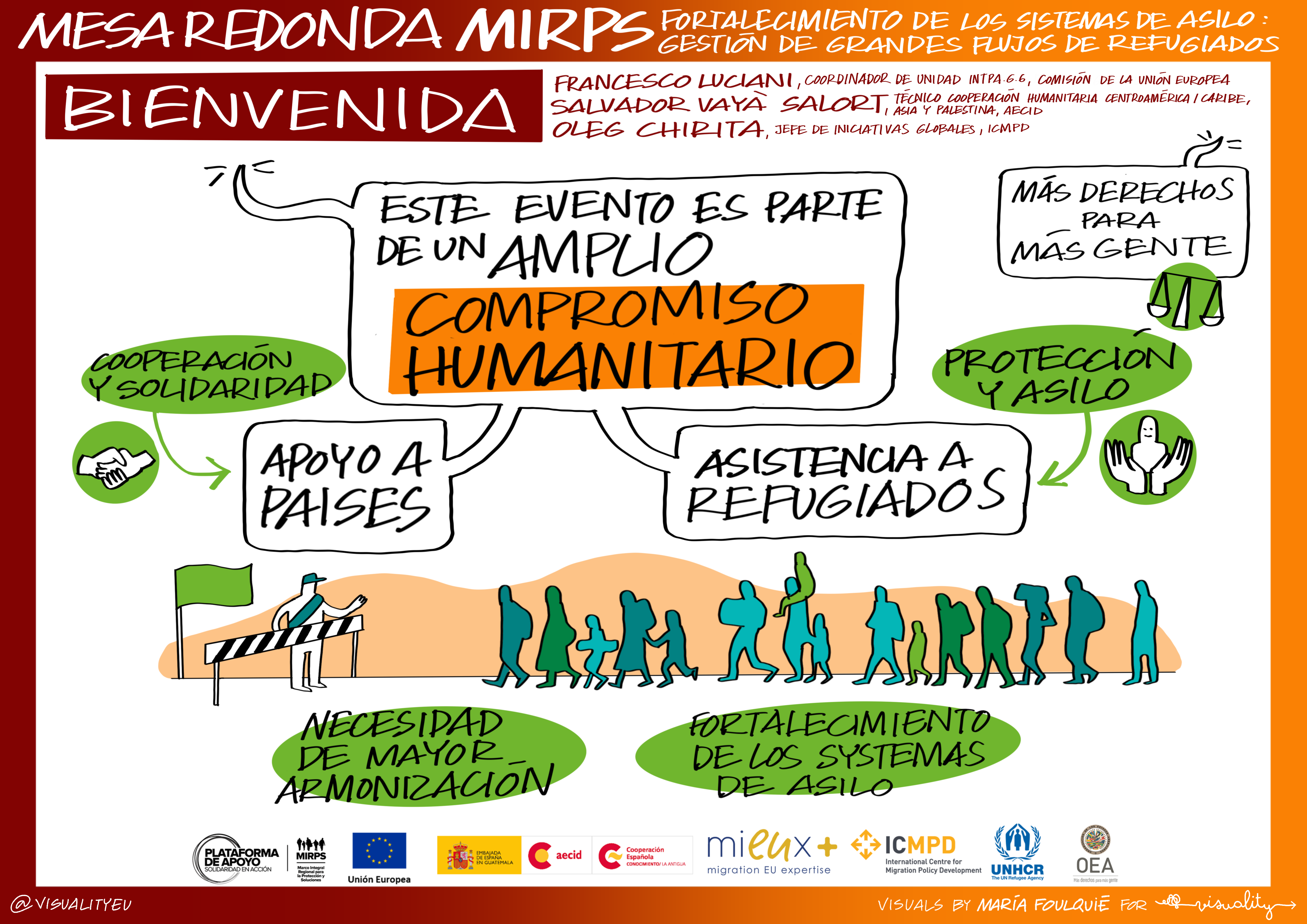 |
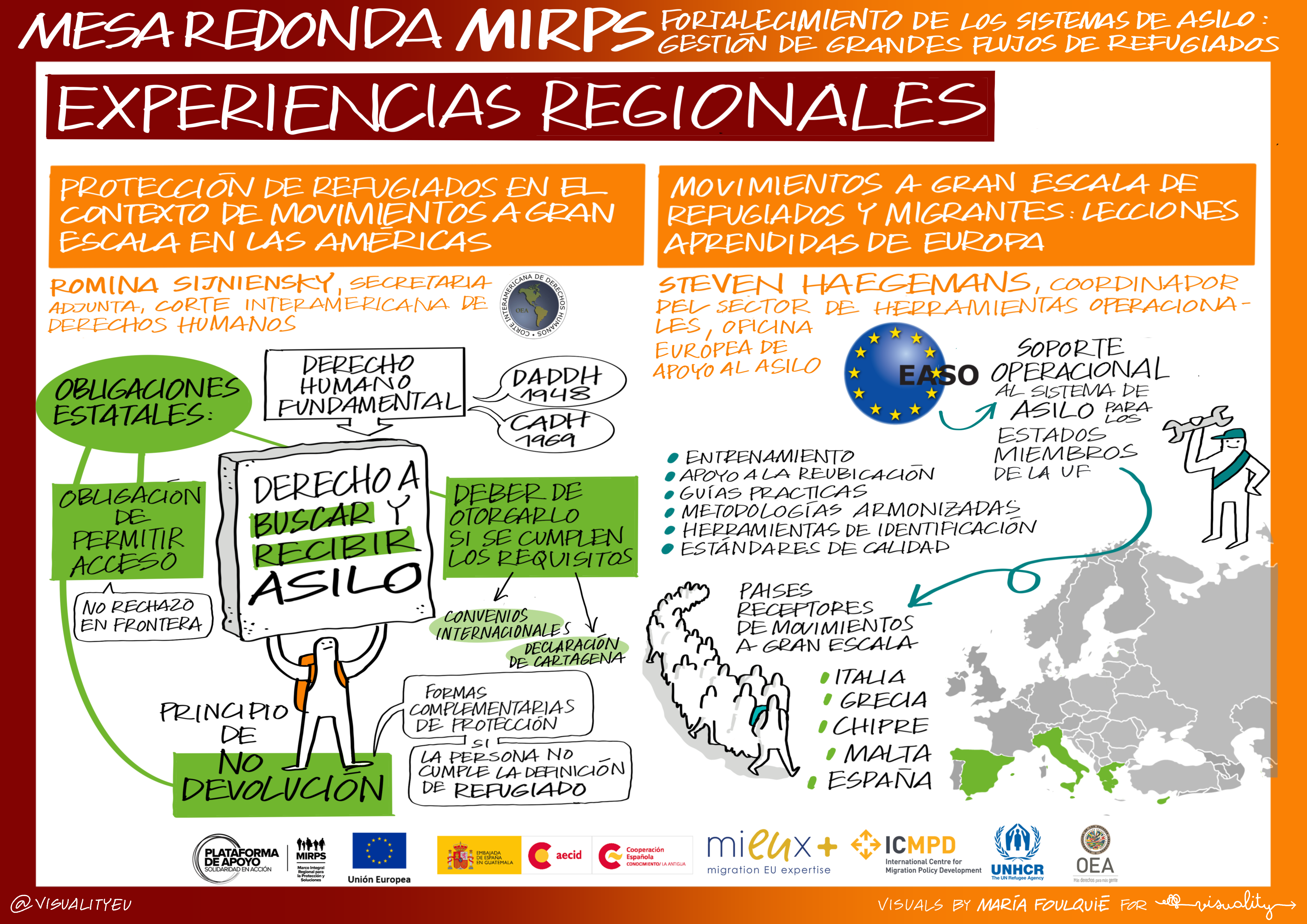 |
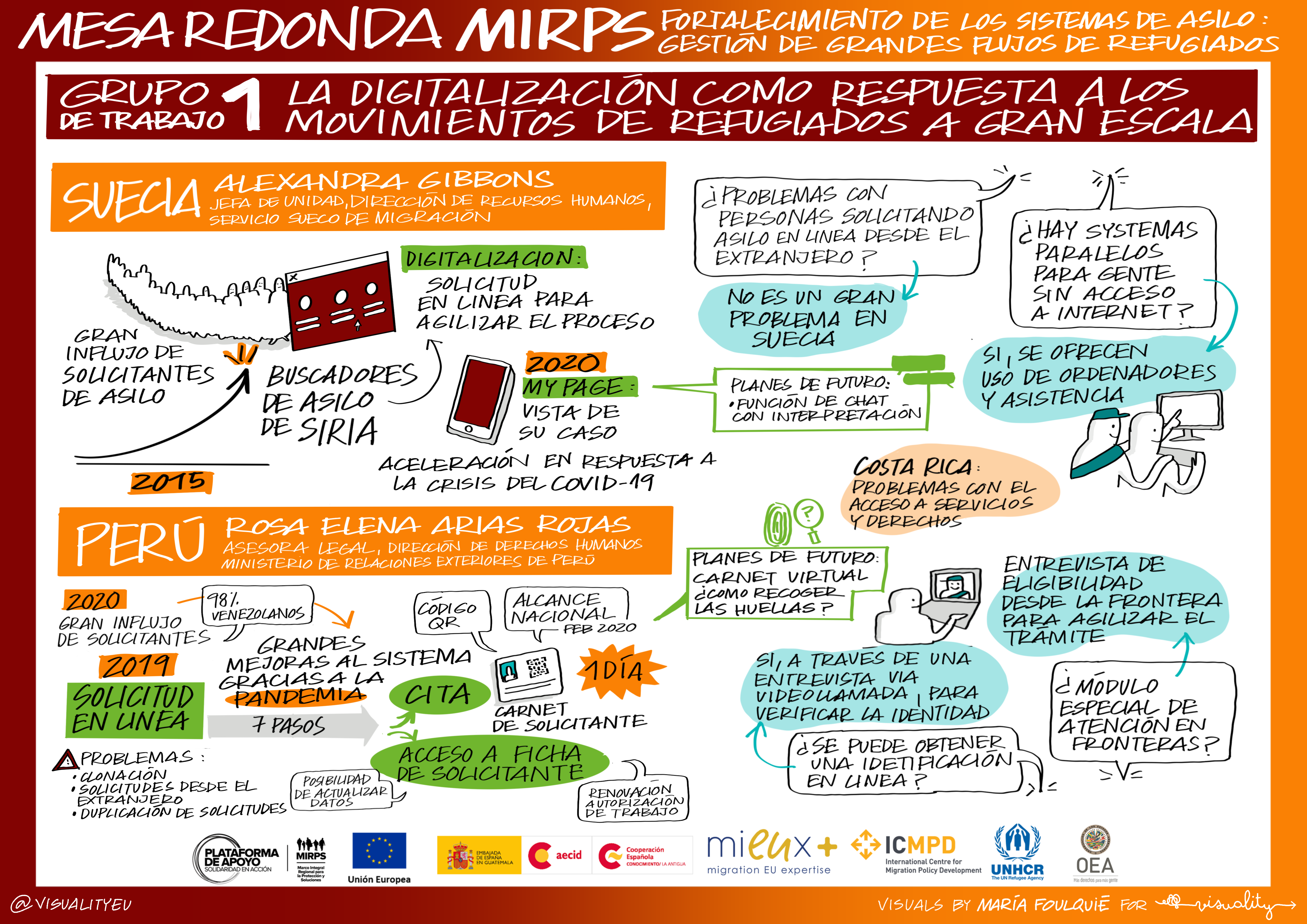 |
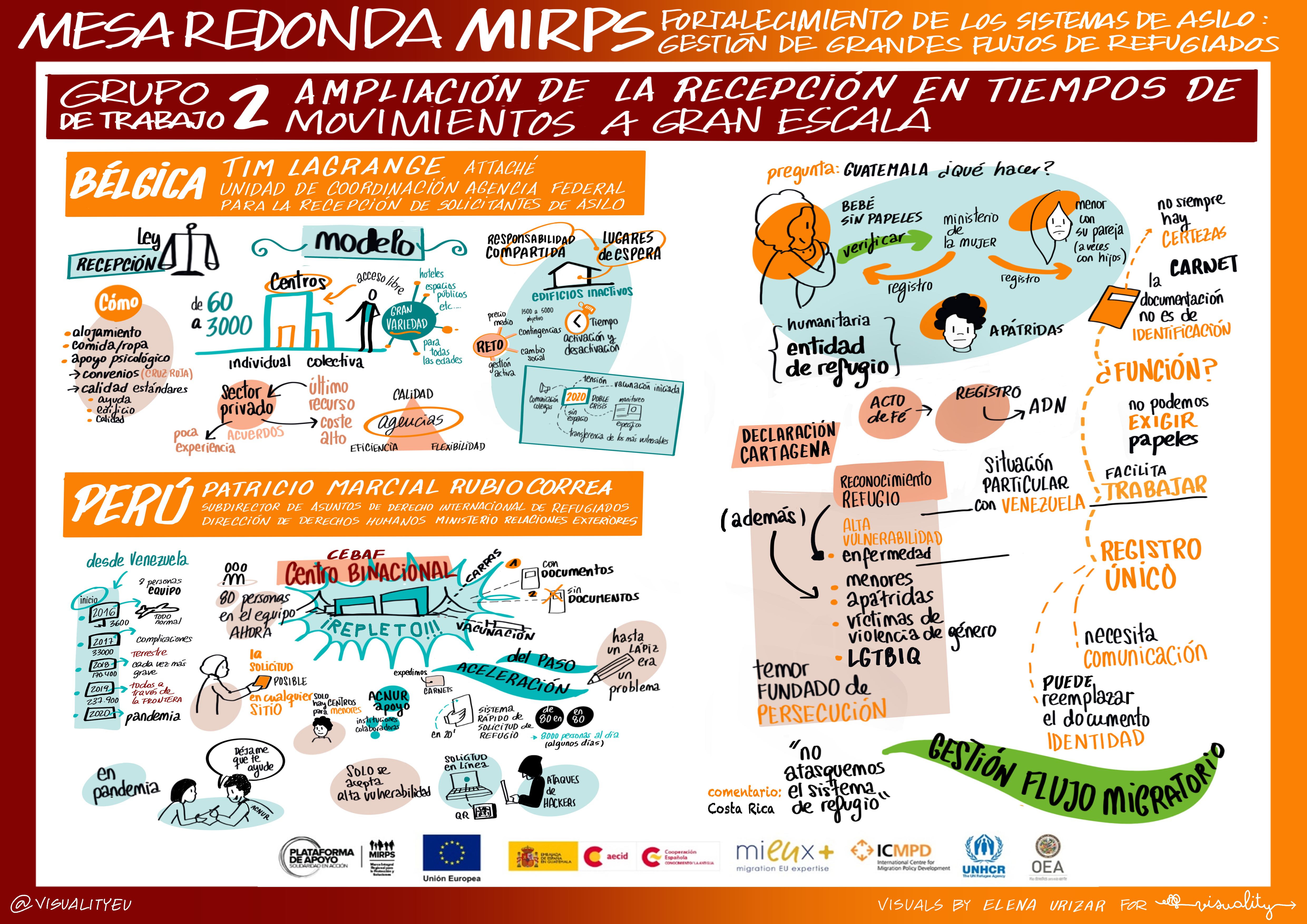 |
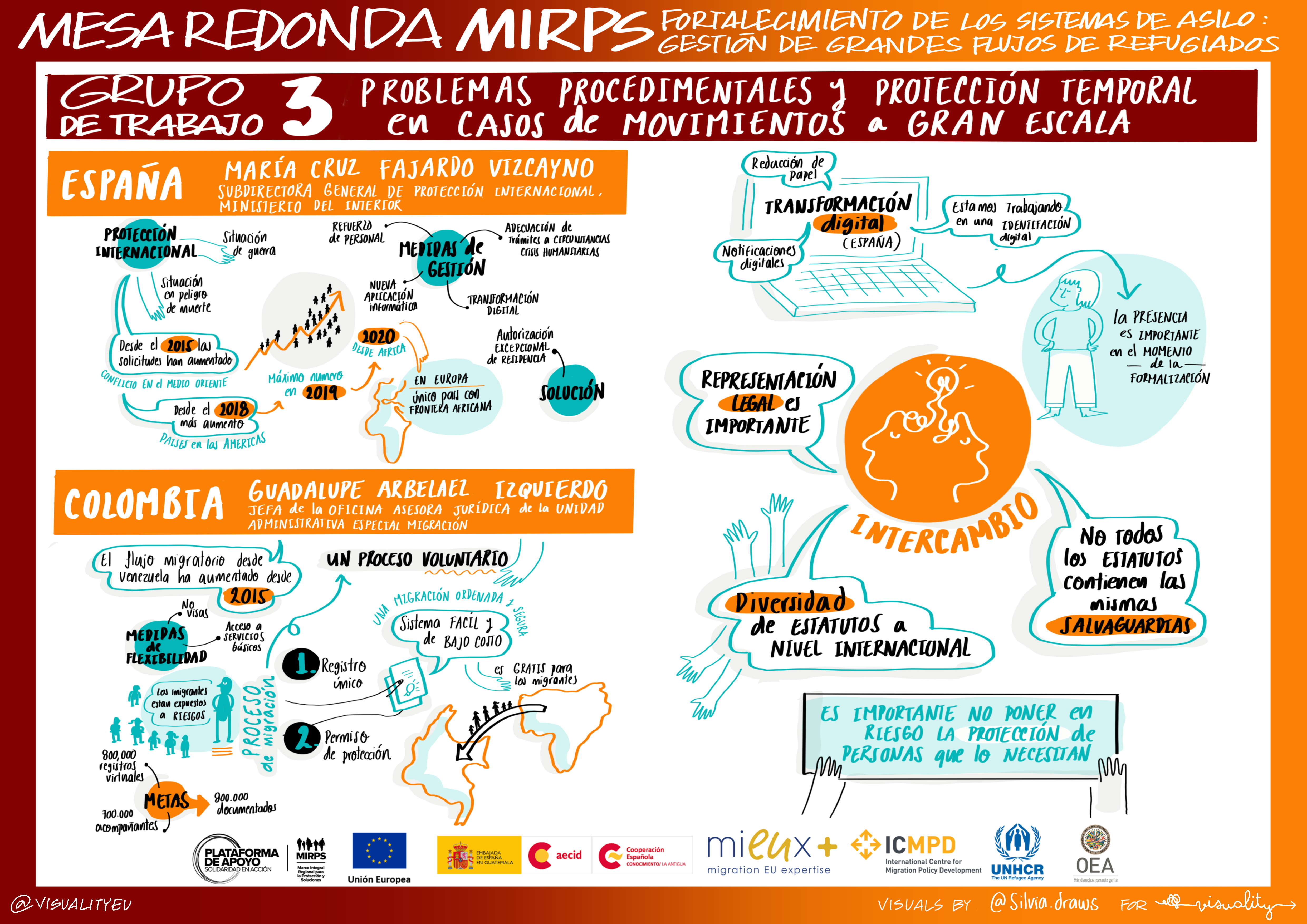 |
|



